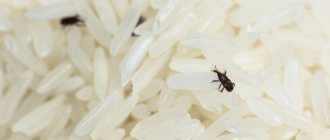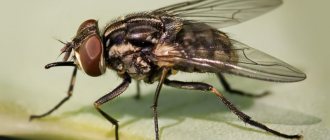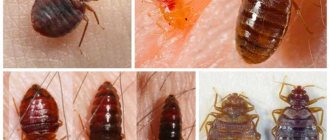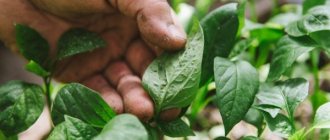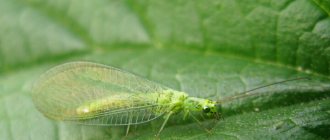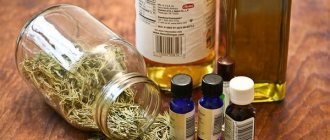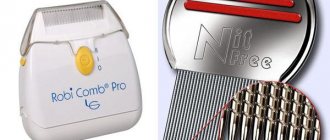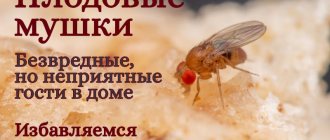The list of plants that the false scale insect attacks is extensive: it includes massive trees, shrubs, and flowers, including indoor flowers. All of them, being food for females and insect larvae, weaken and lag behind healthy specimens in growth. There are chemicals and folk remedies that help save plants from the parasite.
Varieties of scale insects and false scale insects that attack coniferous trees
Scale insects and pseudoscale insects are closely related species of insects. It can be difficult to spot differences by eye. The first group has a flat shell. It is easily separated from the body when the parasite is removed from the plant. The false scale insect is completely removed from the needles. Its shield looks like a pea and is tightly attached to the body.
Coniferous trees are threatened by:
- Scale insects – pine, juniper.
- False scales - spruce, thuja, soft, acacia and others.
Most often, false scale insects and scale insects parasitize conifers, juniper, yew crops, hazel, fruit trees and shrubs. Possible infection of indoor flowers.
Females pose a great danger to trees. They settle on the surface a few hours after birth.
Spruce
As the name suggests, this parasite infects coniferous plants. The body of the female is covered with a round shiny shell with a diameter of 3-6 mm. Males are less common, measuring 1 mm in size. There are several subspecies of spruce false scale - small, large and Hungarian.
In July, females lay about 3,000 reddish eggs. They hatch into pinkish larvae. They stick to the lower surface of the needles or between the scales of the buds. In October the parasites turn brown. They overwinter in the tips of shoots or the last whorls. In the spring they turn into adult parasites.
Soft false scale
In nature, this species is found in the Caucasus, Transcaucasia and Crimea. It can live everywhere in greenhouses.
Characteristic external signs:
- The body is in the shape of a wide oval, asymmetrical.
- The false shield is flat.
- The color is yellowish-brown. There are darker spots on the back.
- Size 3 – 4 mm.
The soft scale insect is a viviparous species. The larvae disperse by crawling along plant branches. At this stage, the cephalosporium fungus is often affected. In addition to coniferous trees and shrubs, it infects citrus, palm, and orchid plants.
Tuevaya
Most often found in Crimea, the European part of Russia, Central Asia and the Caucasus. It affects fir, spruce, thuja, pine, juniper, and yew trees.
Females of this species are spherical in shape, with a diameter of 3–3.5 mm. Covered with a shiny chitinous shell of yellowish-brown color. Males are rare. They have wings.
In May, females lay eggs. After a few weeks, the reddish-brown young hatch. The false scale insect on thujas overwinters under the bark of new shoots. The following spring, the larva develops into a mature parasite.
Any methods of combating thuja false scale insects are more effective while the pest is in the larval stage.
Acacia
This species is more often found on deciduous trees. Damages fruit crops - cherries, apples, plums, peach. You can see the acacia moth on berry bushes and hazel.
An adult female has a size of 3 – 6 mm. The body is oblong, red-brown, convex. Males have a more elongated shape. Their head is black, their body is covered with a white coating. Pseudoscale eggs are laid in May. The larvae overwinter on the lower surfaces of branches, in crevices of the bark.
Bark beetles (Scolytinae)
A real scourge of forests. If your area with conifers is located near a forest, be careful, sooner or later the conifers will become the object of attention of this beetle. Most of them live directly under the bark of conifers, sometimes going deep into the trunk and gnawing numerous passages in the wood. The length of the beetle does not exceed 1.2 cm, and its dark color makes it inconspicuous. The female lays eggs directly into the passages she has gnawed, and the hatched larvae lay out their own “routes.” After overwintering, they move outside and begin to fly. First of all, bark beetles select sick, weak and dry trees, finally destroying them.
Measures for prevention and control of bark beetle It is important to protect young plantings of fir, spruce, thuja, pine and other trees - it is in the first 2-3 years that they are especially vulnerable. To begin with, use pheromone traps that lure insects from a distance of up to 7 km. To combat the bark beetle, use protective drugs BI-58, Kliper, Krona-Antip, Bifenthrin. Spray the preparations Antizhuk, Konfidor, Calypso, Antishashelin into the passages 2-4 times, then cover the passages with garden varnish. Coat trunks and thick branches with a mixture of clay and humus and slaked lime with manure. An old and diseased tree favored by the bark beetle is easier to uproot and burn.
How to detect the presence of parasites?
Infestation with false scale insects can be determined by several signs:
- The appearance on the needles of a Christmas tree or fir of a sticky coating similar to syrup - honeydew honey.
- The needles turn yellow, become covered with brown spots, and gradually die off.
- Larvae or adult pests can be found on the lower part of the shoots.
- The sticky secretions attract honey bees, wasps, flies and ants to coniferous trees.
- Honeydew honey is a good substrate for the growth of saprophytic fungi. Secondary infection is determined by the formation of a black coating on the needles.
Thuja diseases
Diseases of thuja include rust, schutte, late blight, tinder fungus, drying out of shoots and branches and brownishness of shoots.
Brown shoots
This is an infectious disease, the symptoms of which become noticeable in early spring. In winter, the fungus hides in the soil and plant debris, so at the end of autumn you need to weed and clean the area. When sick, the thuja bark turns yellow. The fungus spreads to the shoots, causing them to die.
In order to save the thuja and prevent large-scale spread of the fungus and the death of the plant, you need to treat the thuja from summer to early autumn with a special preparation “Fundazol”. It is also necessary to cut off diseased branches and lime the roots of the thuja. To prevent disease, it is recommended to fertilize thuja only in spring. In autumn, this procedure is dangerous, because... Young shoots may freeze.
Rust
Most often, the disease affects young thuja for several reasons: high humidity levels; lack of fertilizers; prolonged hot weather. To save thuja, it is necessary to spray thuja in the spring with the preparation "HOM", diluted with water, while simultaneously removing diseased branches. If this procedure does not help, you should use the drug "Fundahol".
Schutte
This is a fungal disease in which the needles darken and fall off. Like the previous disease, Schutte causes the most harm to young thujas. The disease manifests itself due to improper insufficient nutrition and poor care in general. To heal a tree, you need to spray it with Topsin-M. This procedure should be carried out in the spring, when frost is not expected. If the drug does not help, it is effective to spray the thuja with Bordeaux mixture, which you can prepare yourself.
This disease is considered one of the most dangerous for the thuja tree. It manifests itself due to the occurrence of groundwater at the site of growth and poor drainage of the soil. The late blight fungus settles on the root of the thuja and spreads throughout the tree. As a result of the disease, the trunk loosens, the needles and bark become grayish in color, and eventually the tree dies.
Tinder fungus
Most often it harms thuja through wounds or dried twigs. The spores of the disease enter the tissues of the thuja, where over time growths form - fruit fungi. Due to the disease, the tree begins to dry out and becomes yellowish in color. Any growths and diseased parts of the plant that appear must be removed immediately. The wounds are then cleaned and treated. For treatment purposes, it is also necessary to treat thuja with Bordeaux mixture in spring and autumn.
The appearance of yellowness or drying of the thuja speaks of fusarium in the root system. This fungal disease damages the roots of the thuja, so the first signs may not be noticeable. As a result, the shoots dry out first, and then the whole plant.
To cure thuja, its crown and roots need to be treated with fungicides. The cause of the disease may be poor nutrition, so it is immediately necessary to feed the thuja with honey and iron-containing substances. In early spring, it is recommended to clean the thuja from shrunken, damaged shoots, and in the summer to cut off the branches by 1/3.
How dangerous are false scale insects?
Having settled on trees or bushes, the parasites begin to suck the sap from the plants. This entails detrimental consequences:
- The tree loses vitamins and microelements.
- Growth slows down.
- Young shoots become bent and needles fall off.
With massive infection, the plant loses all its needles and eventually dies.
Hermes pest on coniferous trees
Hermes is one of the most common pests of coniferous trees. This is a parasite that settles on branches in colonies. Females feed on the sap of the plant and lay eggs on the branches. The emerging larvae damage the buds and the plant gradually loses its vitality and dies (Figure 1).
The danger of hermes is that it spreads quite quickly and can completely destroy the plant in one season if the garden owner does not take measures to combat the pest.
Causes
Hermes can settle on any coniferous crop. It is difficult to determine the cause of the spread of the pest, since it spreads freely and can even affect conifers growing far from other similar crops.
Excessive watering and lack of fertilizers in the soil can provoke an invasion of pests. But most often insects appear in the garden after purchasing low-quality seedlings infected with larvae. Therefore, it is recommended to purchase planting material only in specialized nurseries, and all seedlings are carefully inspected before planting.
Figure 1. Signs of Hermes pest damage
Despite the fact that Hermes itself does not pose a very serious danger, it must be destroyed. A plant weakened by insects becomes more susceptible to disease and other pests.
Symptoms
Determining the presence of Hermes on a crop is quite simple. With massive damage, the needles begin to bend and turn yellow, and the plant itself is significantly retarded in growth.
To accurately determine the type of pest, just carefully examine the underside of the needles. This is where the female Hermes settle. They look like small fluffy balls of cotton wool. Small black insects are usually found next to them. If these signs are detected, you must immediately begin treatment, since insects constantly drink the sap of the plant and quickly spread to neighboring crops.
Treatment
There are several types of Hermes with different periods of exposure. So, at the end of June, conifers are affected by an early type of pest, which forms galls at the ends of the branches. A second wave of infection is possible in August, when yellow Hermes is active (large green galls form on the branches). In September, a late type of pest appears, as a result of whose activity spherical galls appear at the ends of the branches.
Due to the physiological characteristics of the parasite, it is quite difficult to fight it. The fact is that the insect’s body is covered with fluff, which makes insects practically resistant to insecticides. The only drugs that can destroy the pest are Aktara and Commander.
Ways to combat scale insects and false scale insects
There are several ways to combat scale insects on spruce and other conifers:
- Mechanical – used for small lesions in the early stages. Diseased shoots are removed and burned. Sometimes it is possible to wash off the scale insects from the thuja with a sponge dipped in a soap solution.
- Biological - the use of microorganisms or insects that eat scale insects. Preparations based on fungi and nematodes have also been developed.
- Chemical - using toxic substances. The phase of the parasites' life cycle should be taken into account. Adults are protected by a chitinous shell. Larvae are more sensitive to toxic substances.
- Folk remedies. Plant- and chemical-based preparations are used. Efficiency is higher in relation to young pests.
Effective folk remedies
Treatment with a soap-alcohol solution gives a good effect in the fight against false scale insects. To prepare it you will need:
- warm water – 1 l;
- liquid soap – 15 ml;
- denatured alcohol – 10 ml.
Attention! The mixture is applied with a brush in places where insects accumulate. It is not recommended to spray trees, as it can cause burns to leaves and young shoots.
You can get rid of pests using a soap-oil emulsion:
- Pour a glass of water and stir 10 g of powder or laundry soap.
- Pour in 30 g of machine oil.
- Cover the soil under the plant with film.
- Treat the needles or foliage of the hazel tree and leave for 8 – 12 hours.
- Wash off with cold water.
This treatment is repeated 2-3 times with a break of 7 days.
At the initial stages of infection, you can destroy the false scale insect with herbal infusions:
- Chop and grind 5 cloves of garlic in a mortar. Pour a glass of water and leave for 4 – 6 hours. Wash the affected areas with this liquid. You can strain the infusion through cheesecloth and spray the tree.
- Cut a medium onion and leave in a glass of water for 3-4 hours. Lubricate damaged areas of pine needles or foliage.
- Grind 50 g of fresh hot pepper, add 500 ml of water and bring to a boil. Cool and let sit overnight. To process, take 10 g of solution, 5 g of laundry soap and add 1 liter of water.
Use of professional drugs
The main types of chemicals and rules of use are presented in the table:
| Drug name | Group and spectrum of action | Mode of application |
| Aktellik | Organophosphate insecticide | Dissolve 1 ampoule in 10 liters of water Consumption – 2 liters of solution per 10 sq. m |
| Aktara | Broad spectrum insecticide | Dissolve 4 g of product in 10 liters of water. Water at the root or spray the crowns. |
| Arrivo | Enteric contact acaricide | |
| Fitoverm | Intestinal and contact insectoacaricide | 4 g of the drug is dissolved in 1 liter of water, the affected areas are treated |
| Bankol | Enteric-contact insecticide | 7 g of product are diluted in 10 liters of water |
Chemicals are toxic, so personal protective equipment must be used.
Diseases of coniferous plants: blackening of needles
A disease of coniferous plants, which results in blackening of the needles, is called schutte. This is a fungal disease that not only changes color, but also leads to premature death of branches (Figure 2).
Figure 2. Blackening of needles on various crops
Schutte can appear at any time of the year, but most often symptoms appear on young, immature plants. Schutte comes in several types, but regardless of the type, it causes blackening of the needles, spreads quickly and can cause the death of the plant.
Causes
The main reason for blackening of needles is incorrect selection of seedlings from a climate point of view. A young plant that has not been grown correctly will be too weak and susceptible to fungal diseases.
Excessive shading and humidity are considered to be provoking factors for the development of conifers. This is why the disease often appears in dense coniferous forests. Therefore, when planting conifers on a site, you need to place them evenly and periodically inspect them in order to take therapeutic measures in time.
The author of the video will tell you more information about diseases of coniferous crops.
Symptoms
As mentioned above, blackening of needles is most often caused by the fungal disease Schutte.
The disease comes in several types, each of which is characterized by certain symptoms (Figure 3):
- True Schutte causes brown spots on the needles. They gradually spread, and the pathogen remains viable even on fallen needles.
- Common schutte provokes yellowing of the needles. Gradually it turns bright orange and falls off. The disease spreads very quickly, especially in warm and temperate climates.
- Snow chute begins to develop in winter, under the snow, since the pathogen retains vital activity even in frost. In the spring, it becomes active, causes darkening and fragility of the needles, and spreads quickly, greatly weakening the crop.
- Brown Schutte is one of the most popular types of disease. It affects all types of coniferous plants, both in nurseries and in natural conditions. In the spring the needles turn brown, during the summer the plant gradually weakens and may die in the fall.
Figure 3. Types of shutte: 1 - real, 2 - ordinary, 3 - snowy, 4 - brown
This fungal disease can appear on any type of coniferous plant. Therefore, it is necessary to observe certain preventive measures, and if the first signs are detected, treatment must be carried out.
Treatment
To prevent the development of the disease, varieties of conifers that are resistant to the fungus are selected. In addition, young seedlings should, if possible, be isolated from adult crops. In autumn, all the needles from the ground are collected and burned along with dry and damaged branches.
Other prevention and treatment options include:
- Spraying with Bordeaux mixture or other copper preparations during the summer;
- In the spring, a thorough inspection and pruning of all damaged branches is carried out. Waste must be burned;
- Biofungicides and phytosporin can be used as a remedy.
When spraying, it is necessary to treat not only the tree itself, but also the soil around it, since fungal spores that fall into the ground along with the needles remain viable for a long time and can cause re-infection.
Timing and methods of processing fir trees
Conifers and hazel trees need to be treated 2 times a year:
- In the spring, before the buds open.
- In July, when the larvae settle.
In case of severe infection, treatment is repeated immediately after flowering. Typically, these cases require multiple treatments using different chemicals.
Spraying the crown with preparations
To get rid of pests, you need to spray the crowns of trees in dry weather. The product should remain on the needles and shoots for at least 6 – 8 hours. If it is washed away by rain, re-treatment is required.
It is better to spray in the morning or evening hours, when there is no direct scorching sunlight and the leaves will not get burned. At the initial stages, only small infected areas can be treated. If the pest has spread throughout the plant, the crown is completely irrigated.
Root application of the drug
Applying drugs at the root is advisable when treating low trees and shrubs with a dense dense crown. The solution is absorbed from the soil and rises up to the leaves and needles. This measure allows you to treat hard-to-reach areas of the crown where the product will not reach when sprayed.
This method is more expensive, but its effect in case of severe infection is greater and longer lasting.
Improper care
Over or under watering
Thuja loves well-moistened soil, but cannot tolerate stagnant moisture, as well as close groundwater.
The recommended frequency of watering for thuja is once a week, during dry periods - twice a week, and in the first month after planting - daily.
The volume of water for irrigation, under normal conditions, should be a bucket per tree (in unfavorable conditions, two buckets). In order for moisture to be retained in the soil, but not to stagnate, the soil in the tree trunk circle must be mulched: in winter with sawdust, in summer with peat.
Excessive watering and stagnation of moisture for more than two weeks lead to rotting of the plant roots and contribute to the development of fungal diseases. With insufficient watering, the thuja turns yellow and dries out.
She loves thuja and periodic sprinkling, especially in the summer heat. It is better to do this in the evening so that drops on the needles do not cause sunburn.
Errors in feeding
Fertilizers for thuja are useful, but in moderation. If fertilizers were applied during planting, then the next time the tree will need to be fed in two years.
In spring, the plant is fertilized with nitrogen compounds, and in early summer with potassium compounds. If the tree grows in poor soil, then in the summer you will also need fertilizers containing phosphorus. However, it is worth remembering that excessive application of fertilizers can cause burns to the roots and yellowing of the tips of the shoots.
Important! Under no circumstances should you feed thuja before the winter period. This is fraught with the development of various kinds of diseases. In this case, the thuja should be fertilized with a complex fertilizer, for example, Kemira Universal or Osmokot.
In this case, the thuja should be fertilized with a complex fertilizer, for example, Kemira Universal or Osmokot.
Wrong choice of place for thuja
When choosing a place to plant an ephedra, you need to take into account the fact that the tree grows well on well-drained soil consisting of turf, peat, and sand. Planting it in sandy, clay or peaty soils can negatively affect the development of the plant, causing yellowing and shedding of needles or drying out of the lower branches.
Did you know?
In the wild, the most beautiful thujas grow in moist, fresh, slightly acidic or neutral soils in mixed forests.
Thickened plantings are also harmful to thuja.
In places where branches of different trees come into contact, the needles may turn yellow and fall off. The recommended minimum distance between seedlings is 1 m.
Thuja is a light-loving plant, so it must be planted in open areas.
However, for the first time after planting, it is important to shade the seedling from the sun, otherwise the needles may lighten. It is advisable to choose a place for planting where direct sunlight will not fall on it at noon.
Of course, thuja will not grow in full shade and will completely lose its attractiveness. Remember: the condition and appearance of the plant in the future will depend on the correct planting and choice of location.
Prevention and rules of agricultural technology
To prevent infection with false scale insects and scale insects, it is recommended to follow the rules of agricultural technology:
- Plant trees at a distance so that they do not crowd together and interfere with each other.
- Water and spray regularly, trim the crowns if necessary.
- Apply fertilizers and fertilizers that improve plant immunity and increase resistance to pests.
- Inspect plants regularly. When the first signs of infection are detected, remove the damaged areas and treat with medications.
Important! To reduce the number of parasites in the area, it is necessary to carry out regular cleaning. Dry leaves, damaged pieces of bark and branches need to be collected and burned.
The fight against false scale insects or scale insects must be carried out taking into account the life cycle of insects. The larvae of the parasite are most sensitive to drugs. In the early stages of infection, you can cope with the problem using folk remedies. In advanced cases, repeated treatment with industrial preparations will be required.
How to get rid of scale insects in the garden using agricultural techniques and effective drugs, read more in the article here.
Mr. Summer resident advises: preventive measures to prevent damage to false scale insects
To prevent plants from being attacked by a pest, a number of preventive measures must be followed:
- Inspect regularly and thoroughly. Preferably using a magnifying glass.
- Water in a timely manner.
- Spray.
- Provide access to fresh air for indoor plants.
- Apply fertilizers to increase stability.
- Remove damaged branches, dried leaves, and dead bark.
- Do not plant densely to avoid crowding.
- Place in a sufficiently lit place.
Threatened
Scale insects can appear on indoor plants no matter how well you care for them. Moreover, it affects any plant, including succulents. But this pest also has its favorites, which are attacked first. We are talking about orchids and laurels. Palm trees and ivy do not avoid scale insects. With great pleasure, the scale insect feasts on Cyperus, Aucuba and other exotics. The usual household inhabitants are also under attack: chlorophytums, geraniums and hippeastrums.
What is noteworthy is that the pest most often appears in winter and early spring. This is evidenced by numerous amateur photos. How to deal with scale insects on indoor plants? It is necessary to improve the immunity of the plantings. After all, at this time the plants are most weakened, which becomes a decisive factor for the pest. It is much easier for them to harm flowers that are not able to resist. Therefore, follow the recommended conditions, and closer to spring add special immunostimulants to the soil. This could be inexpensive succinic acid.
Gray larch leaf roller
These dark caterpillars wrap thuja needles in a web, making cocoons. Pests are located in the middle of the cocoons. This causes the thuja to lose its decorative appearance and may die over time.
Remedies for leaf roller
To prevent the appearance of the caterpillar, you need to spray with one of these drugs: Fufanon, Decis Profi, Actellik. The rate of the latter drug is 15-20 ml/10 l of liquid. The consumption of the working solution is 1 l/10 m². Spraying with Actellik is carried out in May - early June, repeated spraying in the summer when the pest population is large.
Description of the insect
Appearance
The color of the pine cocoon moth varies in tone from gray-brown to brown and is similar to the color of pine bark. The upper wings of the butterfly are grayish-brown, decorated with a red-brown stripe bordered by black jagged lines. Closer to the head, there is one clearly visible small white spot on both wings. The lower wings and body have a uniform gray-brown color.
The wingspan of the female butterfly reaches 9 cm, and the male - 7 cm. In addition, the male is distinguished by the structure of the antennae, which are comb-shaped, while the female has thin thread-like antennae.
Reproduction
The pine cocoon moth is a dry-loving species and avoids damp habitats.
The most favorable places for its reproduction are dry pine forests growing at higher elevations. Butterflies begin to fly out in June and finish flying at the beginning of August.
Starting from mid-June, females lay eggs in groups of 50 on the needles, branches and bark of trees. One butterfly can lay up to 300 eggs at once. The egg stage lasts from 14 to 25 days.
In July or early August, young caterpillars emerge from the eggs and, when mature, reach 8 cm in length. The color of the caterpillars ranges from brown to ash-gray, and their hair has a reddish tint. The pine cocoon moth caterpillar can be distinguished by two dark blue velvet stripes on the second and third segments of the body.
Nutrition
The hatched caterpillars begin to feed intensively already on the second day, eating both old and young tree needles. As a rule, needles are eaten by voracious caterpillars up to
grounds. In mid-autumn, caterpillars descend from trees for the winter, hiding under moss or climbing into a litter of fallen pine needles. Some individuals climb into the ground for the winter to a depth of 10 cm.
In early spring, overwintered caterpillars emerge from their hiding places, climb a tree and begin to devour old needles with renewed energy. The expanded population is mistaken for fresh buds and shoots.
In mid-June, the caterpillar reaches its final stage of development and begins to create a cocoon around itself, and then turns into a pupa. At this time, oblong gray cocoons can be seen on the needles, branches of the tree or on its bark. After about three weeks, a butterfly emerges from the cocoon. As a rule, the development of the pine cocoon moth lasts one year, but some caterpillars overwinter twice, stretching their development over two years.
Folk home remedies
When the pest invasion is not yet too strong, you can use traditional methods of protection. If spider mites have attacked plants grown in open ground (vegetables, flowers), you can try spraying with natural plant-based preparations, for example, liquid manure with the addition of decoction, horsetail or wormwood, extract or decoction of garlic, tomato leaves, onions, dandelion . In any case, frequent misting will better limit the number of insects on the plant.
Thuja is an evergreen plant that is resistant to low temperatures, droughts and poor growing conditions. Thuja needles are needle-shaped or scaly and have a green, yellow, golden or blue color. Many gardeners grow decorative thuja in order to separate their area from the road with a thuja fence. The plant is planted both singly and in groups, decorating alleys at entrances, parks, rock gardens, etc. In addition to these benefits, thuja is considered a medicinal plant, because it contains phytoncides and essential oils.
Despite its ease of care and resistance, thuja is susceptible to damage by insects and fungal diseases. Some diseases and insects can cause great harm to the thuja and even destroy it. With proper care and timely prevention or treatment, the plant can be saved and the possible consequences of the disease can be prevented. When growing thuja, you need to remember that the first signs of problems are the falling and unusual yellowness of the needles. The needles often change color and fall off at the end of the growing season. Such features may indicate illness, but sometimes this only indicates that the thuja is preparing for winter
But extra vigilance and precaution never hurts
BUPRESTIDAE
The amazing Russian name of the family - zlatki - accurately characterizes the main feature of most of its representatives - the bright metallic (in fact, not always golden) color of the beetles, shimmering in the sun with all the colors of the rainbow. As if knowing that they look especially beautiful in bright light, borers really love open sunny places.
In total, about 10 thousand species of borers are known in the world. Most of them live in the tropical zone of the planet, although we also have a lot of them: in Russia there are over 400. Mostly these are small and medium-sized beetles. Our largest species do not exceed 3 cm in length. But in Colombia, the beautiful giant euchroma reaches a size of 7 cm.
The body of the borer is almost cylindrical in shape, flat, elongated. The elytra are very strong. Prothorax without sharp angles. The legs are quite short and strong.
On a nice sunny summer day, borers can almost always be seen on freshly cut tree trunks, emitting a specific spicy resinous smell.
The beetles are very mobile and, as a rule, good flyers: in the midst of the midday heat they fly from trunk to trunk, quickly run along them, and bask in the sun. Goldfish have good eyesight and instantly react to danger. They are difficult to catch: when you approach the trunk on which the beetle is sitting, it instantly, like a woodpecker or a squirrel, moves away from you to the opposite side. You begin to follow him around the tree; the beetle notices your movements and again gets ahead of you, moving forward in a circle.
If you do catch the beetle, it instantly presses its legs and antennae to its body and falls to the ground. Goldweeds, like many weevils, have the ability to resort to catalepsy. In cloudy, gloomy weather, it is practically impossible to find gold borers - they are inactive and hide in secluded places.
The larvae of these beetles are worm-shaped, legless and eyeless, with the head retracted into the prothorax. Unlike the larvae of longhorned beetles, it is much wider in the larvae of golden beetles than other segments of the body. Above and below the prothorax is equipped with supporting platforms - calluses. They replace legs for the larvae. With their help, the larvae move inside the passages they gnaw in the wood.
The borers live and feed mainly on tree and shrub species - under the bark, in wood or on roots, mainly infecting dead or drying plants. But in many species, the larvae also develop in healthy wood, wearing away trunks or prepared logs and thereby causing significant harm.
The fact that the trunk is inhabited by borers can be judged by the shape of the flight holes in the wood. They are gnawed by beetles, trying to emerge from the depths of the tree trunk into the light of day. This is a clear diagnostic sign. If, for example, the bark is dotted, as if pierced by shot, with round holes from 0.5 to 4 mm in diameter, then this is a sign that the tree is damaged by bark beetles or weevils. If large (up to 7 mm) round holes are visible, these are most likely barbels or horntails. But the oval shape of the holes is evidence of the colonization of the tree by borers.
Pests of deciduous trees predominate among borers; The conifer fauna is relatively poor in species. Like bark beetles and longhorned beetles, each species prefers one or more closely related tree species and inhabits a certain part of the tree trunk, branches or roots.
The burrows of borers in wood are similar to the burrows of longhorn beetles, but are easily distinguishable from the latter by their flat shape and drill flour laid in layers. The shape of the passages is determined by the shape of the body of the larvae.
Not all types of borers have a bright color that resembles “gold”.
Disease groups
Almost all types of coniferous crops can grow on a summer cottage, especially in central and northern Russia. But today, southerners have also decided to fill urban recreation areas and home areas with these attractive crops.
First, you need to familiarize yourself with the catalog of conifers and select species that easily adapt to the environment and can take root in new conditions. Conifers have difficulty taking root in an unusual environment, lose their immunity and easily become ill with infectious diseases (rot, mildew, fungal and bacterial infections). Therefore, in the first years (5-7 years) they need comprehensive and very careful care.
If optimal conditions have been created for the conifers at the dacha, but they still look sick (they don’t grow, individual branches or the entire tree dry out, etc.), you need to immediately determine the type of damage, which can be divided into 2 groups:
- non-infectious causes of the disease.
- infectious diseases.
Coniferous plants in the garden. MrArtlover1
Moth
Small larvae (4 millimeters in size) of this moth gnaw tree branches. As a result, they turn brown and the shoots die.
The moth moth loves spruce plants, and thuja is no exception.
Treatment
If you see traces of such larvae on your tree, you can prevent their further destructive effect by simply pruning. Treating thuja at the end of June with products (twice with an interval of eight days) that contain pyrethroids will also help stop moths. For example, Fumitox Anti-mite, Tornado Anti-mite, Moskitol Anti-mite.
Leafrollers
Order: Lepidoptera (butterflies). Kinds:
- larch gray;
- spruce beetle;
- spruce needle beetle;
- plump fir;
- knobby.
Description:
- Butterflies have roof-shaped, elongated triangular, grayish-whitish wings;
- The caterpillars are 16-legged, covered with sparse hairs, greenish, pinkish-white or yellowish in color, with a brown or black head.
If the pest is a larch, fir or spruce leaf roller:
- defeat occurs in early July;
- on the lower branches of conifers, red, clearly visible spider nests with pest feces and dry remains of needles appear;
- insects attack mainly larch, fir and spruce.
If the pest is the pinecone leaf roller:
- caterpillars eat only fir cones;
- eats up to 90% of all cones on the tree;
- the problem is that externally infected cones are practically no different from healthy ones;
- the only sign of pests inside them is resinous secretions on the scales;
- After falling, infected cones do not open, their seeds have almost zero germination.
How to fight? Spraying with chemical insecticides is effective only at the very beginning of infection, since then they hide deep in their nests or cones, and the active substances simply do not reach them
Therefore, it is much better to focus on preventive measures, so that already at the beginning of summer pheromone houses from leaf rollers hang in the garden. There are also belt traps that are thrown onto the lower branches of trees, and in the fall they are burned along with the insects that get there.
